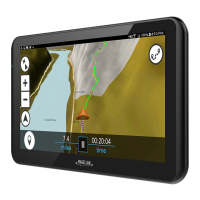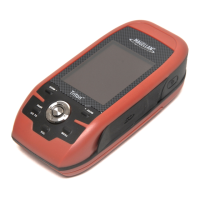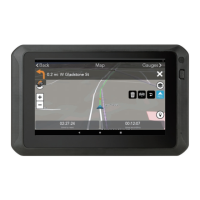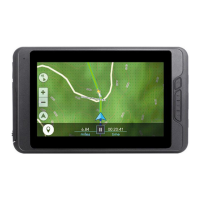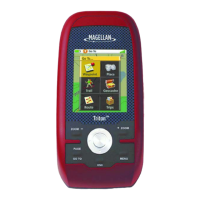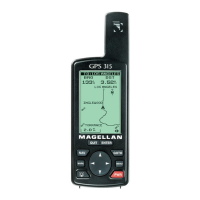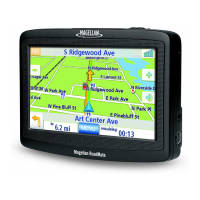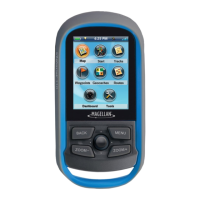2.
Press the
UP/DOWN ARROW
to toggle between Lat/Lon and
UTM. (Default is Lat/Lon displayed as degrees/minutes.) Press
ENTER.
3.
If Lat/Lon was selected, the receiver shows the two available
display options. Press the
UP/DOWN ARROW
to select de-
grees/minutes or degrees/minutes/seconds.
4.
Press
ENTER
to return to the SETUP menu.
North Reference.
This is often referred to as magnetic variation. The
receiver should be set to use the same reference as your other navigation
aids.
1.
From the SETUP menu, highlight "NORTH REF." and press
ENTER.
2.
Press the
UP/DOWN ARROW
to toggle between true and
magnetic. (Default is magnetic.) Select magnetic if you are
using a compass. Select true if you are using a map or chart
without any other navigational aids.
3.
Press
ENTER
to return to the SETUP menu.
Time Display.
The receiver stores time as UT, but can also display time in the
local clock by computing and storing an offset that is applied to UT before
display. If you select a local clock display, you may choose AM/PM or 24-hour.
1.
From the SETUP menu, highlight "TIME DISPLAY" and press
ENTER.
2.
Press the
UP/DOWN ARROW
to toggle between local (24
hour), local (AM/PM), and UT. (Default is UT.)
3.
Press
ENTER.
lt you selected local time, key in the current time.
If AM/PM was selected, use the
UP/DOWN ARROW
to select
AM or PM. Press
ENTER
again.
Map Datum.
A map datum is a set of mathematical assumptions on which
measurements and positions on the surface of the earth are based. There are
a number of datums in common use, each based on a different set of values
and measurements.
14

